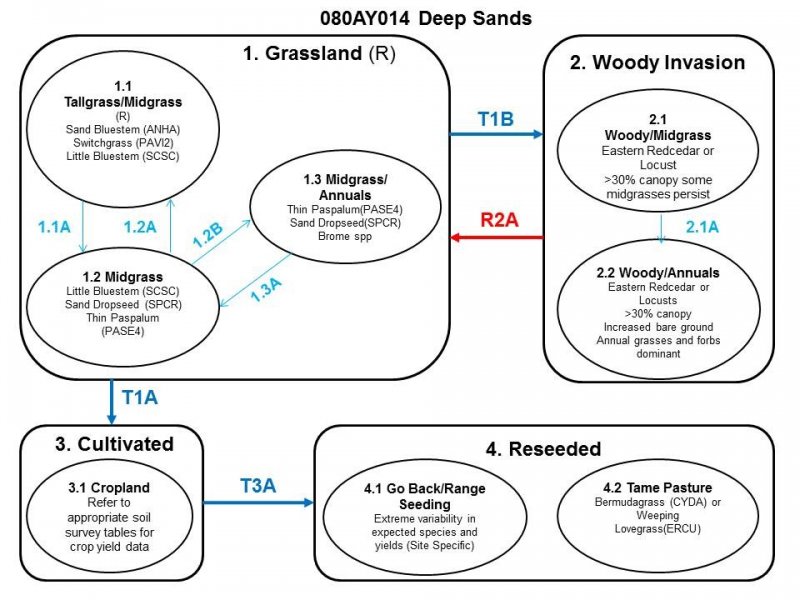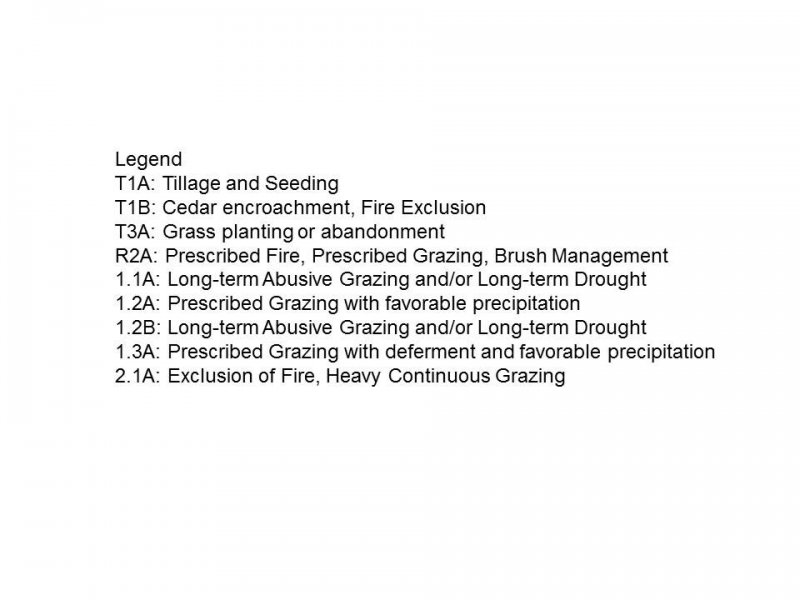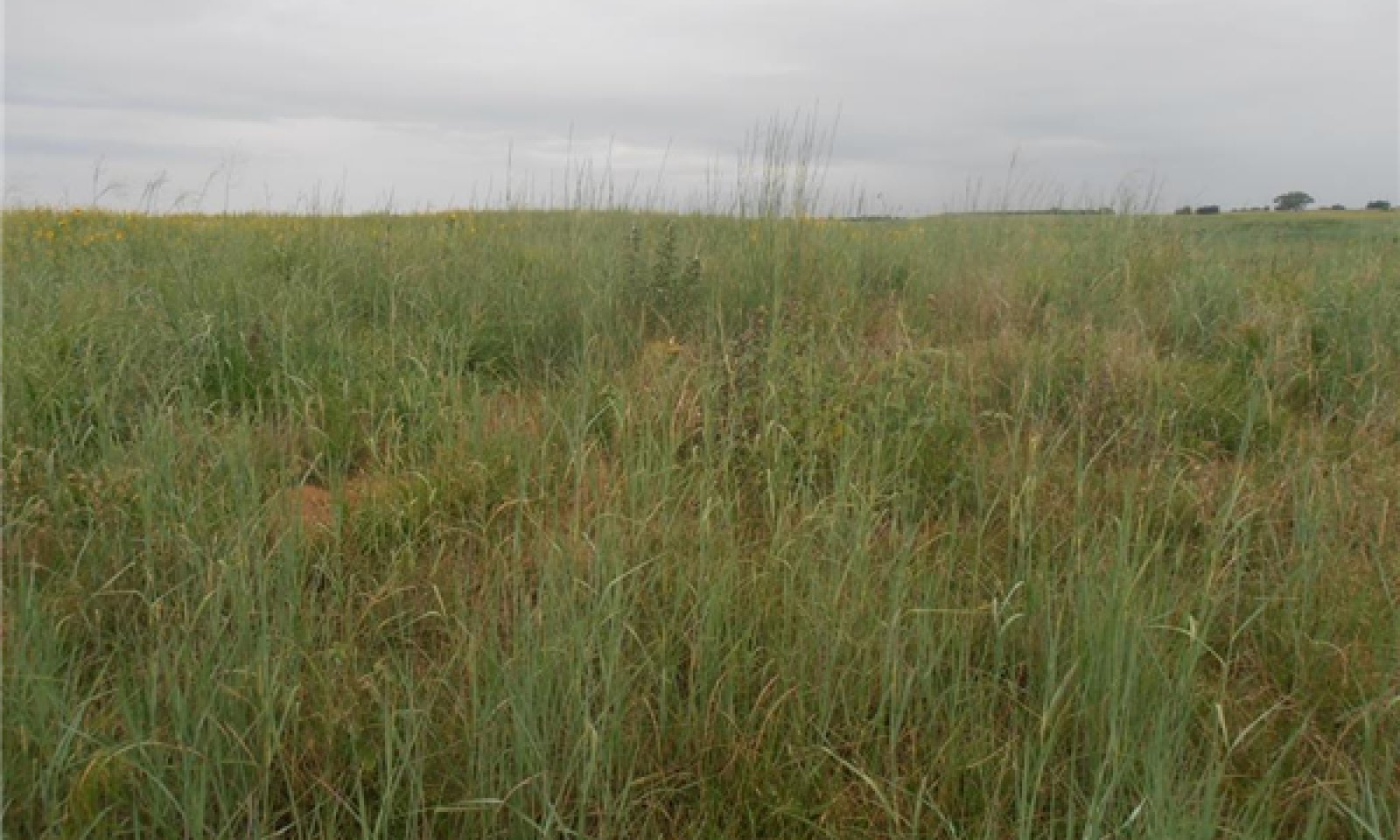

Natural Resources
Conservation Service
Ecological site R080AY014OK
Deep Sand
Last updated: 9/19/2023
Accessed: 12/17/2025
General information
Provisional. A provisional ecological site description has undergone quality control and quality assurance review. It contains a working state and transition model and enough information to identify the ecological site.
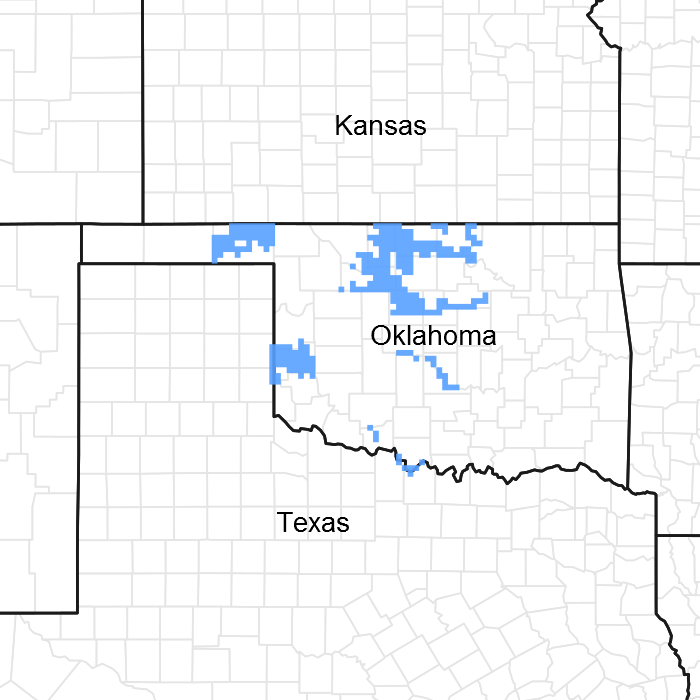
Figure 1. Mapped extent
Areas shown in blue indicate the maximum mapped extent of this ecological site. Other ecological sites likely occur within the highlighted areas. It is also possible for this ecological site to occur outside of highlighted areas if detailed soil survey has not been completed or recently updated.
MLRA notes
Major Land Resource Area (MLRA): 080A–Central Rolling Red Prairies
MLRA 80A is characterized by dark red Permian rocks that are exposed on gently sloping plains. These plains are dissected by rivers that flow from northwest to southeast. Major rivers of this MLRA include the Chickaskia and Bluff rivers in KS, the Salt Fork, Cimarron,North and South Canadian,Washita, Cache, Red River in OK, and branches of the Wichita River in TX. Soils are generally well drained, loamy or clayey deposits overlying Permian sandstones or shales.
Classification relationships
This MLRA overlaps other land classifications systems including Level IV EPA Ecoregions 27o “Crosstimbers Transition”, 27d “Prairie Tableland”, 27i “Broken Red Plains”, and 27l “Pleistocene Sand Dunes”.
This particular ecological site may be part of alternative vegetation descriptions including:
Landfire: Central Mixedgrass Prairie/Western Great Plains Sand Prairie
Grasslands of OK(Harland): Mixed Prairie Grasslands
FGDC code: V.A.5.N.a. Andropogon hallii - Calamovilfa gigantea
Ecological site concept
This site occurs on very deep sandy soils with relatively low water holding capacity and rolling to hummocky relief. The reference plant community is dominated by warm season perennial mid and tall grasses with subdominant perennial forbs and legume species. This plant community evolved through periods of grazing, fire, and drought. Therefore, many of the species that occur are somewhat tolerant to these disturbances. Woody species canopy cover is generally the least in the reference plant community and generally increases as “time since fire” increases. Productivity on this site may vary greatly from year to year depending on precipitation patterns. In the absence of fire and proper grazing management, this plant community may transition to an alternative plant community.
Associated sites
| R078CY107TX |
Sand Hills 23-31" PZ Coarse sandy soils on steeper dunes. Lower clay content, less production and higher amounts of bare ground. Occurs in MLRA 78C. Jester or Tivoli Soils. |
|---|---|
| R080AY018OK |
Deep Sand Savannah Older sands. More acidic soils support Oak trees and tall/midgrass savannahs. Derby Soils. |
| R080AY022OK |
Dune Coarse sandy soils on steeper dunes. Lower clay content, less production and higher amounts of bare ground. Goodnight FS or Tivoli Soils. |
| R080AY073OK |
Sandy Loam Upland Loamy sands on rolling topography. More productive than Deep Sand site. Lovedale, Waynoka, and Slaughterville soils. |
Similar sites
| R078CY014OK |
Rolling Sands Similar topography and soils occurring in MLRA 78C. Less production and higher amounts of Sand Sagebrush. |
|---|---|
| R078CY017OK |
Deep Sand Shrubland Similar topography. Older, more acidic sands. Support growth of Sand Sagebrush and Shinnery Oak. |
Table 1. Dominant plant species
| Tree |
Not specified |
|---|---|
| Shrub |
(1) Prunus angustifolia |
| Herbaceous |
(1) Andropogon hallii |
Physiographic features
These sites occur on gently rolling to low dune deposits on terraces in the Central Rolling Red Prairies MLRA 80A.
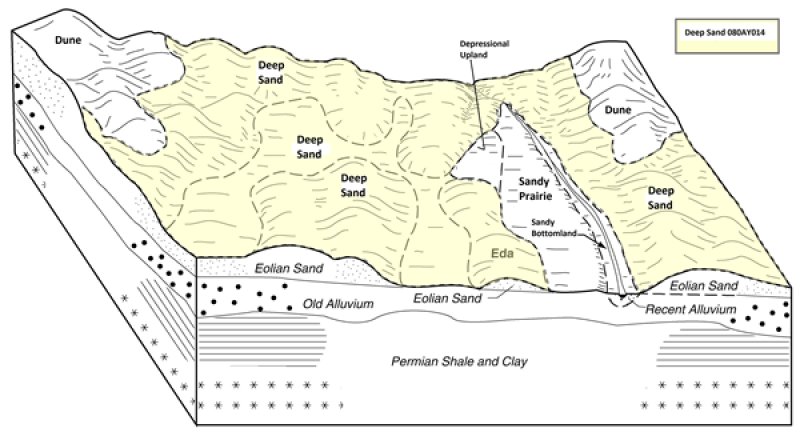
Figure 2. 080AY014
Table 2. Representative physiographic features
| Landforms |
(1)
Plains
> Dune
(2) Alluvial plain remnant > Terrace (3) Plains > Sand sheet |
|---|---|
| Runoff class | Low to medium |
| Flooding frequency | None |
| Ponding frequency | None |
| Elevation | 700 – 1,200 ft |
| Slope | 2 – 12% |
| Ponding depth |
Not specified |
| Water table depth | 60 in |
| Aspect | Aspect is not a significant factor |
Climatic features
The climate is characterized by moist, cool, springs; hot, often dry summers; mild autumns; and mild to cold winters. Variation in timing and amounts of precipition from year to year is quite common. Drought cycles range from three to five years duration with occasionally longer periods occurring at unpredictable intervals. Above normal rainfall cycles are usually just as random, but shorter in duration.
Table 3. Representative climatic features
| Frost-free period (characteristic range) | 165-187 days |
|---|---|
| Freeze-free period (characteristic range) | 193-205 days |
| Precipitation total (characteristic range) | 32-34 in |
| Frost-free period (actual range) | 154-189 days |
| Freeze-free period (actual range) | 190-205 days |
| Precipitation total (actual range) | 31-35 in |
| Frost-free period (average) | 176 days |
| Freeze-free period (average) | 198 days |
| Precipitation total (average) | 33 in |
Figure 3. Monthly precipitation range
Figure 4. Monthly minimum temperature range
Figure 5. Monthly maximum temperature range
Figure 6. Monthly average minimum and maximum temperature
Figure 7. Annual precipitation pattern
Figure 8. Annual average temperature pattern
Climate stations used
-
(1) JEFFERSON [USC00344573], Medford, OK
-
(2) CHEROKEE 4W [USC00341724], Cherokee, OK
-
(3) ANTHONY [USW00013980], Anthony, KS
-
(4) ENID [USC00342912], Enid, OK
-
(5) OKEENE [USC00346629], Okeene, OK
Influencing water features
These upland site may shed some water via runoff during heavy rain events. The presence of good ground cover and deep rooted grasses can help facilitate infiltration and reduce sediment loss.
Wetland description
NA
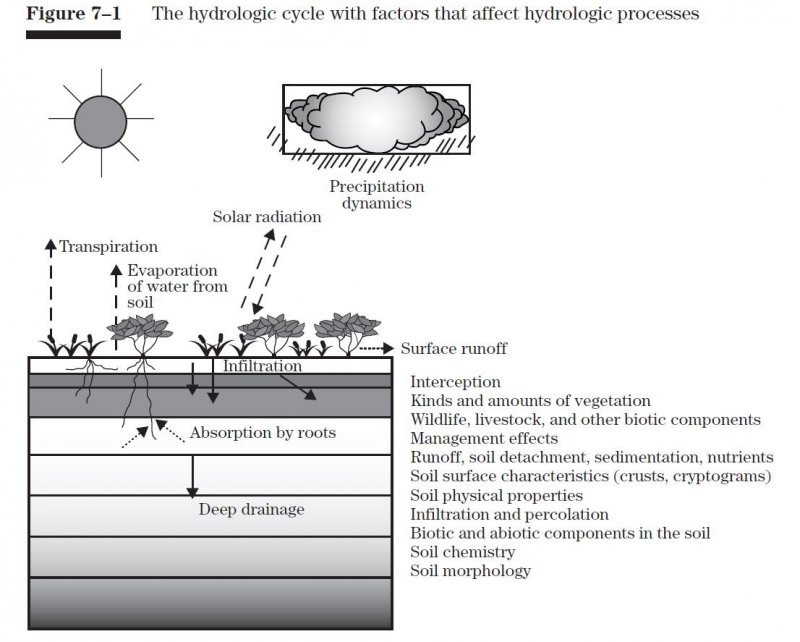
Figure 9.
Soil features
Soils are mapped separately for each county within the MLRA. Mapunits are representations of the major soil series component(s) and named accordingly. Each Mapunit is spatially represented on a digital soils map as polygons of different shapes and sizes. Within these Mapunits, there are often minor soil series components included. These minor components are soils that occur within a Mapunit polygon but are of small extent (15% or less of the Mapunit area). However, it is difficult to separate these minor soils spatially due to the scale of soil mapping.
Ecological sites are correlated at the component level of the soil survey. Therefore, a single Mapunit may contain multiple Ecological Sites just as it may contain multiple soil components. This is important to understand when investigating soils and Ecological Sites. A soil survey Mapunit may be correlated to a single Ecological Site based on the major component; however, there may be inclusional areas of additional Ecological Sites which are correlated to the minor components of that particular soil Mapunit.
Representative soils for this site are:
Eda Loamy Fine Sand & Aline Fine Sand
The soils associated with this ecological site consist of very deep, somewhat excessive drained, rapidly permeable soils that formed in material weathered from sandy eolian deposits. Due to the coarse texture of these soils, water storage capacity is low, but moisture that is present is usually readily available to plants. Available moisture, coupled with the soil's deep sandy profile, encourages deep rooted grasses and various species of woody vegetation. Due to the soils low water holding capacity, there can be a great deal of variation in species and amounts of vegetation depending on variation in rainfall patterns.
Both of these soil series were formerly part of the Pratt soil series which at one point was mapped with a very large geographical extent. As the county soil surveys in this MLRA were updated, these particular soils were re-correlated to the current series. However, there are instances in Kansas where the Pratt series is currently mapped in MLRA 80A.
Note: There may be inclusions of other soils that because of mapping scale are not divided out. These may include some areas of the Tivoli series (Sand Hills 078CY107TX) or Goodnight series (Dune 080AY022OK) and the Lovedale/Waynoka/Wisby series (Sandy Prairie 080AY073OK).
Table 4. Representative soil features
| Parent material |
(1)
Eolian sands
–
sandstone
|
|---|---|
| Surface texture |
(1) Loamy fine sand (2) Fine sand |
| Drainage class | Somewhat excessively drained to excessively drained |
| Permeability class | Rapid |
| Soil depth | 60 in |
| Surface fragment cover <=3" | 1% |
| Surface fragment cover >3" | 1% |
| Available water capacity (0-40in) |
3 – 4.5 in |
| Calcium carbonate equivalent (0-40in) |
1% |
| Electrical conductivity (0-40in) |
1 mmhos/cm |
| Sodium adsorption ratio (0-40in) |
1 |
| Soil reaction (1:1 water) (0-40in) |
6.5 – 7.3 |
| Subsurface fragment volume <=3" (Depth not specified) |
1% |
Ecological dynamics
The information in this ecological site description (ESD), including the state-and-transition model (STM), was developed using historical data, professional experience, and scientific studies. The information is representative of a complex set of plant communities. Not all scenarios or plants are included. Key indicator plants, animals, and ecological processes are described to inform land management decisions.
The reference plant community is the interpretive plant community for this site. This plant community is dominated by warm season, perennial tall and midgrasses. These grass species are intermixed and well distributed over the site. Some plants are strongly rhizomatous and often form colonies six to ten feet across. Production is quite variable from year to year. This site can be very droughty when rainfall is below normal. Conversely, deep rooted tallgrasses respond well and vegetative production can be quite high during periods of normal or above normal growing conditions. However, when deeper rooted tallgrasses are replaced by shallower rooted species, herbage production on the site may be reduced.
This ecological site evolved under disturbances from periodic grazing, fluctuating growing conditions, and fire. Historically, large herds of migratory bison traveled across the Great Plains region, often following naturally occurring fires in order to graze the palatable and nutritious regrowth. The reference state for this ecological site represents the historical variability between plant communities. This variability was affected by several different ecological drivers including time since fire, time since grazing, and changes in precipitation patterns.
With the European settlement of the Great Plains, some of these disturbances were removed from the ecosystem while other disturbances were introduced. With settlement came fire suppression. So without these fires, woody species were able to grow unrestricted and become more dominant in some of the resulting plant communities. Fences were also introduced at this time and allowed domestic cattle to be confined to smaller areas for long periods of time. These fences, coupled with the lack of proper grazing management, led to a decline of some more palatable tallgrasses and forb species. As the site deteriorates from abusive grazing, absence of fire, or both, other plant communities may result. These communities include a midgrass/shortgrass community and a shrub dominant community.
Mechanized agriculture also had a profound impact on the ecology of some of these sites. Although the coarse textured soils are not ideal for crop production, many areas were broke out for farming purposes during the first half of the twentieth century. This cultivation permanently changed the soil structure, biota, and hydrology on these Deep Sand Sites. These farmed areas became prone to wind erosion and many of them were eventually planted back to native or introduced perennial vegetation.
A state-and-transition model diagram for the Deep Sand ecological site is shown after this narrative. The descriptions of each state, transition, community phase, and community pathway follow the model. The model is based on expert evaluation of available experimental research, field observations, professional consensus, and interpretations. It is likely to change as knowledge increases.
Plant community response differs across the MLRA because of the naturally occurring variability in weather, soils, and aspect. The reference community phase is not necessarily the management goal. Other vegetative states may be desired plant communities if range health assessments are in the moderate category and above. The biological processes on this site are complex. Representative values are therefore presented in a land management context. The species lists are representative. They are not botanical descriptions of all species occurring, or potentially occurring, on this site. They are not intended to cover every situation or the full range of conditions, species, and responses for the site.
Percent species composition by weight, percent canopy cover, and other metrics may be described. Most observers find it easier to visualize or estimate percent canopy for woody species (trees and shrubs) than to visualize or estimate production by weight. Because of the influence of shade and interception of rainfall, canopy cover can drive the transitions between communities and states. Species composition by air-dry weight is used for describing the herbaceous community and the community as a whole. Woody species are included in species composition for the site.
State and transition model
More interactive model formats are also available.
View Interactive Models
Click on state and transition labels to scroll to the respective text
Ecosystem states
State 1 submodel, plant communities
State 2 submodel, plant communities
State 3 submodel, plant communities
State 4 submodel, plant communities
State 1
Grassland
The plant communities within the Grassland state represent the historical variability of this site. This ecological state is dominated by fire tolerant, herbaceous plant species. The plant communities within this state have been exposed to periodic fires or an alternative form of brush control.
Dominant plant species
-
Chickasaw plum (Prunus angustifolia), shrub
-
sand bluestem (Andropogon hallii), grass
Community 1.1
Tallgrass/Midgrass

Figure 10. Alin Soils reference community
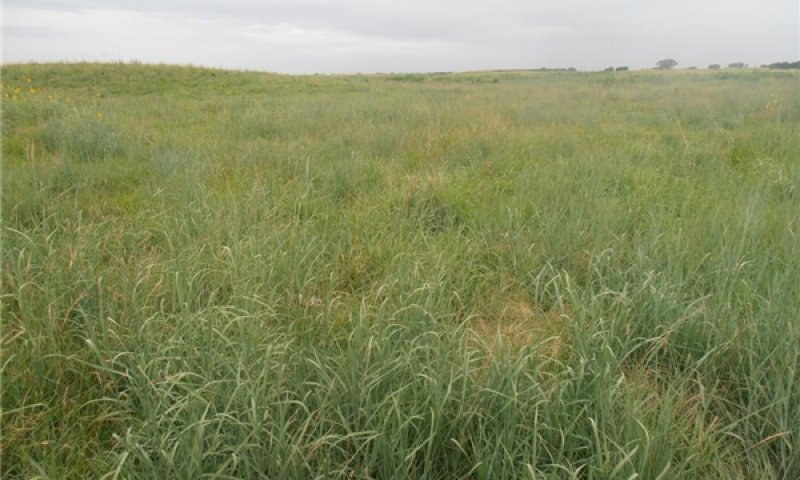
Figure 11. Aline Soils

Figure 12. Community shift 1.1 to 1.2
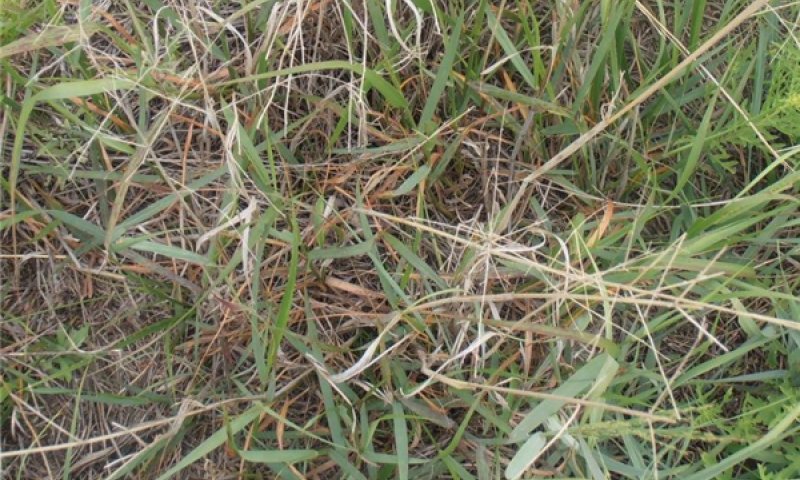
Figure 13. Reference Ground Cover
The reference plant community is dominated by native warm season grasses. The tallgrass species include Sand Bluestem (Andropogon hallii), Switchgrass (Panicum virgatum), Indiangrass (Sorghastrum nutans), and Giant Sandreed (Calamovilfa gigantea). The dominant midgrass is Little Bluestem (Schizachyrium scoparium). Other midgrasses are Sand Dropseed (Sporobolus cryptandrus), Sideoats Grama (Bouteloua curtipendula), Thin Paspalum (Paspalum setaceum), and Sand Lovegrass (Eragrostis trichodes). Forbs on the site include Queen’s Delight (Stillingia sylvatica), prairie clovers (Dalea spp.), roundhead lespedeza (Lespedeza capitata), Sunflowers (Helianthus spp.), Engelmann’s Daisy (Engelmannia peristenia), and Half-shrub Sundrops (Calylophus serrulatus). Typically, shrubs such as Leadplant (Amorpha canescens), Jersey Tea (Ceanothus herbaceus), Soapweed Yucca (Yucca glauca), Fragrant Sumac (Rhus aromatic), and Sand plum (Prunus angustifolia) occur on the site. It is not unusual to find Sand Sagebrush (Artemisia filifolia) on these sites that are located along the western side of the MLRA. Annuals that commonly occur following soil disturbances and drought include Partridge Pea (Chamaecrista fasciculatae), Fourpoint Evening-primrose (Oenothera rhombipetala), Annual Buckwheat (Eriogonum annuum), and Camphorweed (Heterotheca subaxillaris). This plant community requires periodic disturbances through fire and grazing in order to persist. Fire helps to maintain the woody species in a low stature, control their spread, and stimulate herbaceous regrowth; while grazing impacts are important to stimulate plant growth, nutrient cycling, and maintain ecological function. Many species present in this community are quite suitable for livestock grazing, while others provide excellent wildlife habitat for certain species. However, without proper management, this plant community may shift to an alternative community phase. Proper grazing management strategies should include site specific stocking rates, periodic growing season rest, and a contingency plan for drought situations. Implementation of a prescribed burning program is also required to maintain this plant community. A fire return interval of three to five years should be adequate, depending on specific producer objectives. Alternative chemical brush management strategies may be substituted, however, this will often result in negative effects on the diversity of the herbaceous plant community. The following species cover, structure, and production tables have been developed using collected data and professional knowledge. As with anything in nature, there is a large amount of variability from year to year even within a relatively stable plant community. This is true for both vegetative production as well as foliar cover produced by a plant species. The following figures are to be viewed only as a representation of the estimated potential for a given species. As more data is collected and measurement methods are refined some values may be updated through future revisions.
Figure 14. Annual production by plant type (representative values) or group (midpoint values)
Table 5. Annual production by plant type
| Plant type | Low (lb/acre) |
Representative value (lb/acre) |
High (lb/acre) |
|---|---|---|---|
| Grass/Grasslike | 1875 | 2850 | 3750 |
| Forb | 400 | 600 | 800 |
| Shrub/Vine | 200 | 320 | 400 |
| Tree | 25 | 30 | 50 |
| Total | 2500 | 3800 | 5000 |
Table 6. Ground cover
| Tree foliar cover | 0% |
|---|---|
| Shrub/vine/liana foliar cover | 0-10% |
| Grass/grasslike foliar cover | 40-60% |
| Forb foliar cover | 20-40% |
| Non-vascular plants | 0% |
| Biological crusts | 0% |
| Litter | 0% |
| Surface fragments >0.25" and <=3" | 0% |
| Surface fragments >3" | 0% |
| Bedrock | 0% |
| Water | 0% |
| Bare ground | 5-15% |
Table 7. Soil surface cover
| Tree basal cover | 0% |
|---|---|
| Shrub/vine/liana basal cover | 0% |
| Grass/grasslike basal cover | 10-20% |
| Forb basal cover | 5-15% |
| Non-vascular plants | 0% |
| Biological crusts | 0% |
| Litter | 50-75% |
| Surface fragments >0.25" and <=3" | 0% |
| Surface fragments >3" | 0% |
| Bedrock | 0% |
| Water | 0% |
| Bare ground | 0% |
Table 8. Canopy structure (% cover)
| Height Above Ground (ft) | Tree | Shrub/Vine | Grass/ Grasslike |
Forb |
|---|---|---|---|---|
| <0.5 | – | – | 60-60% | 10-40% |
| >0.5 <= 1 | – | – | 65-75% | 25-35% |
| >1 <= 2 | – | 0-10% | 55-75% | 5-25% |
| >2 <= 4.5 | – | 0-10% | 5-25% | 0-5% |
| >4.5 <= 13 | – | – | – | – |
| >13 <= 40 | – | – | – | – |
| >40 <= 80 | – | – | – | – |
| >80 <= 120 | – | – | – | – |
| >120 | – | – | – | – |
Figure 15. Plant community growth curve (percent production by month). OK0002, Native Warm Season - North Oklahoma. This is the estimated growth curve for the northern half of Oklahoma where mean annual air temperatures are less than 60 degrees F. Plant growth can vary from year to year dependening on air temperature and timing and amount of precipitation. These figures are merely a representative example for warm season native plants in the geographic area..
| Jan | Feb | Mar | Apr | May | Jun | Jul | Aug | Sep | Oct | Nov | Dec |
|---|---|---|---|---|---|---|---|---|---|---|---|
| J | F | M | A | M | J | J | A | S | O | N | D |
| 0 | 0 | 3 | 15 | 20 | 30 | 10 | 6 | 10 | 6 | 0 | 0 |
Community 1.2
Midgrass
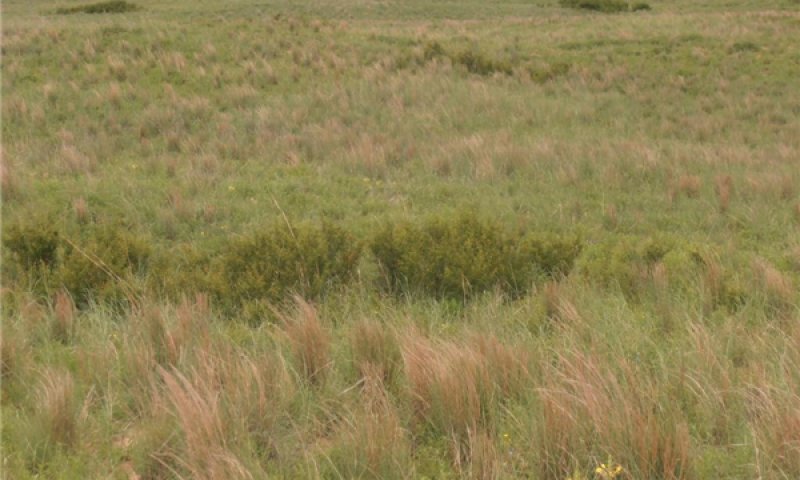
Figure 16. Community 1.2 Midgrass
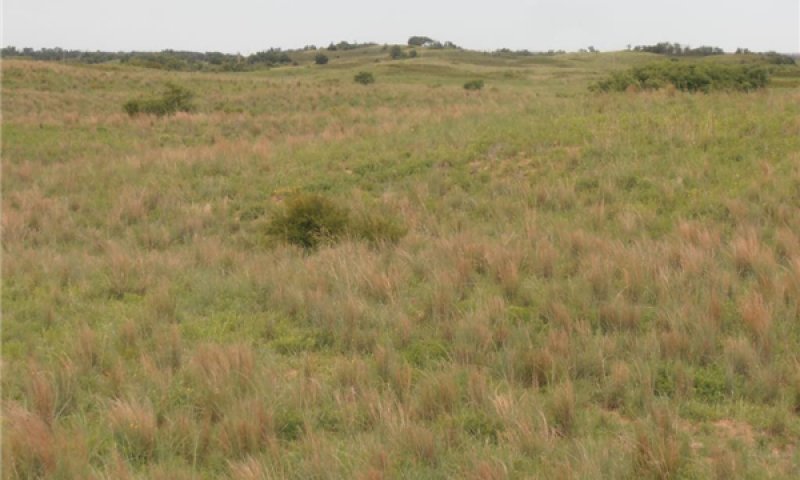
Figure 17. Midgrass community
The dominant plants within this plant community are midgrasses including Little Bluestem, Sand Dropseed, Tall Dropseed, Thin Paspalum, Purpletop (Tridens flavus), Sand Lovegrass (Eragrostis trichodes), and Texas Bluegrass (Poa arachnifera). Tallgrasses have decreased in abundance, with the exception of Giant Sandreed, but may still be found throughout the site. Shortgrasses such as Blue Grama(Bouteloua gracilis), Hairy Grama (Bouteloua hirsute), Fall Witchgrass (Digitaria cognate), and Red Lovegrass (Eragrostis secundiflora) may comprise 10 to 15 percent of the vegetation. In this community phase, the more palatable perennial forbs have decreased in abundance and have been replaced by forbs that are less desirable by cattle. Forbs that may increase in abundance under heavy grazing pressure include Sagewort (Artemisia ludoviciana), Annual Buckwheat, Camphorweed, and Western Ragweed (Ambrosia psilostachya). Shrubs such as Fragrant Sumac and Sand Plum may comprise up to10 percent of the vegetation (canopy cover).
Community 1.3
Midgrass/Annuals
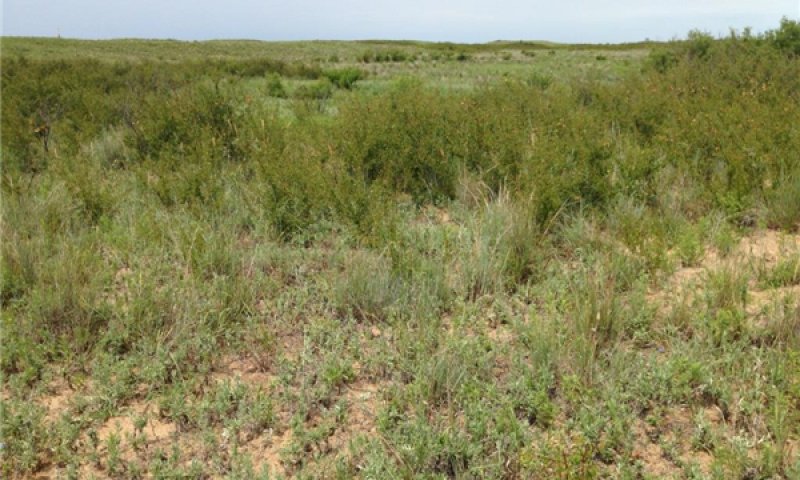
Figure 18. Community 1.3 increased bare ground

Figure 19. 1.3 Ground Cover
This plant community usually exists on areas that have been subjected to many years of long term abusive grazing by cattle. The dominant grasses are Windmillgrass (Chloris verticillata), Fall Witchgrass, Sand Dropseed, Thin Paspalum, and often Annual Brome species (Bromus spp.). Common forbs are Camphorweed, Western Ragweed, Sagewort, Beebalm (Monarda spp.), Annual Buckwheat, Fourpoint Evening-primrose, and Florida Snakecotton (Froelichia floridana). Shrubs, primarily Chickasaw plum and Fragrant sumac may comprise 20 to 30 percent of the vegetation canopy cover. On some sites, Eastern Redcedar (Juniperus virginiana) has begun to encroach since the use of prescribed fire is limited within this plant community because of low fuel loads.
Pathway 1.1
Community 1.1 to 1.2


If the site is subjected to abusive grazing for multiple growing seasons and the more palatable tallgrass species are not allowed adequate recovery, the plant community will begin to transition to a Midgrass dominated plant community(1.2). This community shift may also occur as a result of long term drought as the Midgrass and Shortgrass species are better adapted to dry climates. This pathway is not a one-way street and it is important to remember that this community shift occurred often, historically, and represents the variability within this Reference Sate.
Pathway 1.2A
Community 1.2 to 1.1


With adequate rest from grazing pressure and favorable growing conditions, this plant community may be able to return to the reference plant community (1.1).
Pathway 1.2B
Community 1.2 to 1.3


If grazing pressure is heavy enough to exceed the carrying capacity of the plant community, the remaining palatable grasses and forbs will begin to decline. These species will be replaced by annual brome species, camphorweed, and annual buckwheat. As this community shift occurs, the feasibility of implementing prescribed fire will diminish and woody species will increase within the plant community.
Pathway 1.3A
Community 1.3 to 1.2


With the implementation of a prescribed grazing system that involves periodic growing season rest (deferment), and the reintroduction of fire, this plant community may shift back to plant community (1.2). It is important to remember that adequate precipitation during these rest periods is required in order to allow the plants to recover, regain vigor and produce fuel loads necessary to control the encroaching woody species.
State 2
Woody Invasion
This state of the Deep Sand site has crossed a threshold. It is no longer a simple matter of implementing prescribed grazing and maintenance-type prescribed burning to move this plant community back towards the reference state. Once the community has eastern redcedar and other woody tree species establish, no amount of proper grazing will remove them. Grazing with cattle has little effect on the increase of woody plants: only fire or mechanical removal. The only exception is when browsers such as goats are used when these species are small to remove them from the rangeland.
Dominant plant species
-
eastern redcedar (Juniperus virginiana), tree
-
Chickasaw plum (Prunus angustifolia), shrub
-
sumac (Rhus), shrub
-
little bluestem (Schizachyrium scoparium), grass
Community 2.1
Woody/Midgrass

Figure 20. Community phase 2.1. Eda Soils. Major County, OK
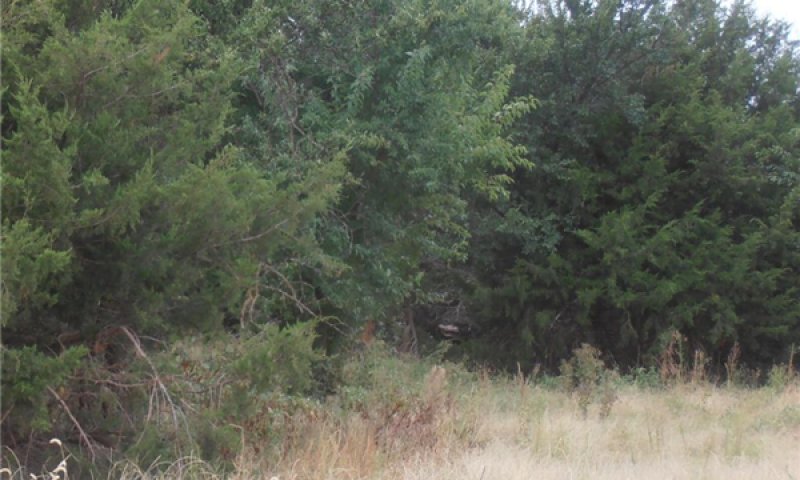
Figure 21. Community Phase 2.1. Eda Soils. Major County, OK
The plant community is now dominated by shrubs consisting primarily of Chickasaw plum, Fragrant Sumac, Smooth Sumac, and in some locations, Sand Sagebrush. In isolated areas, trees including Eastern Redcedar, Black Locust (Robinia pseudoacacia), and Honeylocust (Gleditsia triacanthos) have invaded and have become established to a point beyond simple control. Sand plum typically forms large mottes or circular thickets during this state. Shrubs and trees usually account for greater than 30 percent of total canopy cover. Grass production on the site is significantly reduced. Major grasses are generally Sand Dropseed, Sand Lovegrass, Red Lovegrass, and Thin Paspalum. Perennial forbs common to this state include Tenpetal Blazingstar (Mentzelia decapetala), Annual Buckwheat, Sagewort, Camphorweed, and Western Ragweed.
Community 2.2
Woody/Annuals
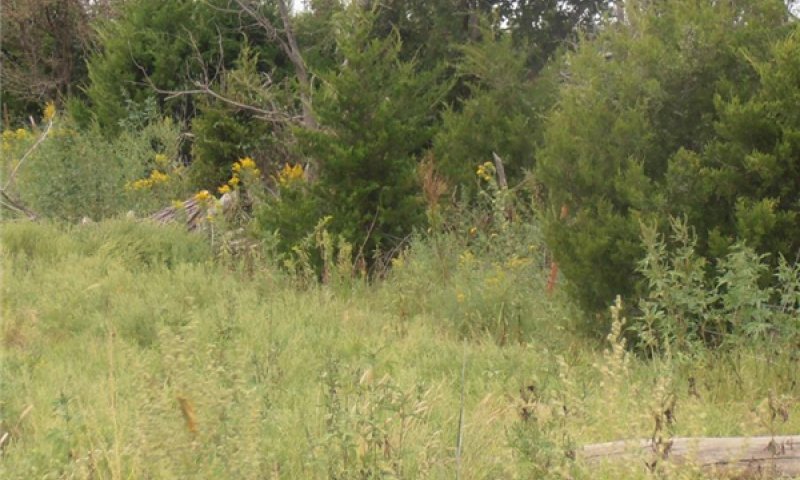
Figure 22. Community phase 2.2. Eda soils. Garfield County, O
Management history has led to this plant community becoming dominated by woody species and annual herbaceous plants. Heavy grazing pressure has led to the decline in perennial forage species. Due to this increase in bare ground, opportunistic annuals such as Cheatgrass (Bromus tectorum), Japanese Brome (Bromus japonicas), and Rescuegrass (Bromus catharticus) are the primary grass species. Annual Buckwheat, Camphorweed, and Annual Broomweed are the highest producing forb species present. Due to the sparse vegetation and lack of fuel continuity, it may be very difficult to implement prescribed burning on this plant community. The juniper is exceeding 50 percent canopy and is shading out the warm season herbaceous plants. Nearly all the soil moisture is now for the exclusive use of the juniper and associated woody species. This community provides little value for livestock and wildlife except for thermal cover.
Pathway 2.1A
Community 2.1 to 2.2


Without fire or brush management, the 2.1 community will shift to the woody/annuals plant community (2.2). The influence grazing has on this site is the management of the fine fuel needed for burning. Over time, the herbaceous component of this community will decline in vigor, growth, and reproductive capability. The shading from the overstory of the woody plants are also beginning to impact the production of the herbaceous plants. These plants will be replaced by opportunistic annual species such as Bromes, Annual Buckwheat, and Camphorweed.
State 3
Cultivated
Within this ecological state, the site has been cultivated and worked up for farming. The soil structure, soil health, hydrology, and plant community has been significantly altered.
Dominant plant species
-
wheat (Triticum), grass
Community 3.1
Cropland
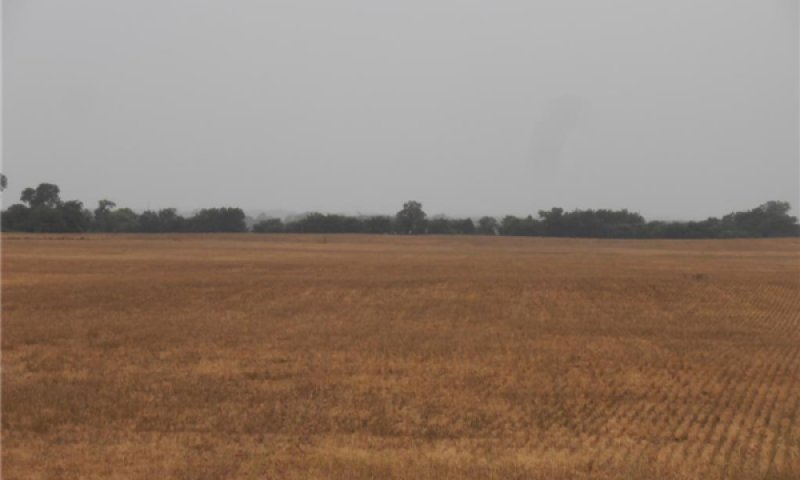
Figure 23. Aline soils in crop production. Alfalfa County, OK
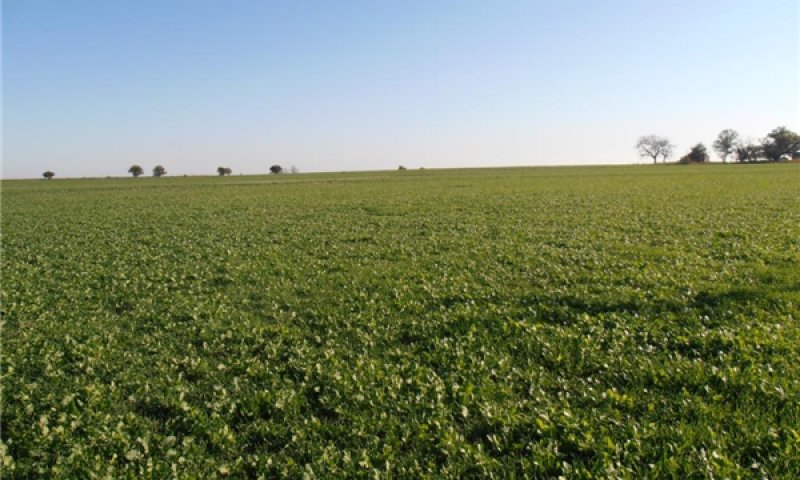
Figure 24. Devol loamy fine sands in crop production. Kingfisher County, OK
This plant community can vary from site to site depending on the production system. Most of these sites in crop production are planted to small grains. Refer to Ag extension publication, web soil survey, or soil survey manuscripts for site specific crop yield data.
State 4
Re-Seeded
This ecological state is the result of reseeding herbaceous plant species or abandonment following a period of cultivation. The plant communities within this state are highly variable in both species composition and production. Under carefully planned management strategies, this state may be restored to a plant community that appears similar to the reference state (1). However, the species composition, ecological function, and soil health may never be restored to reference conditions. Therefore, careful consideration should be taken when evaluating a site that may have been broken out for cultivation in the past.
Dominant plant species
-
little bluestem (Schizachyrium scoparium), grass
Community 4.1
Go Back/Range Seeding
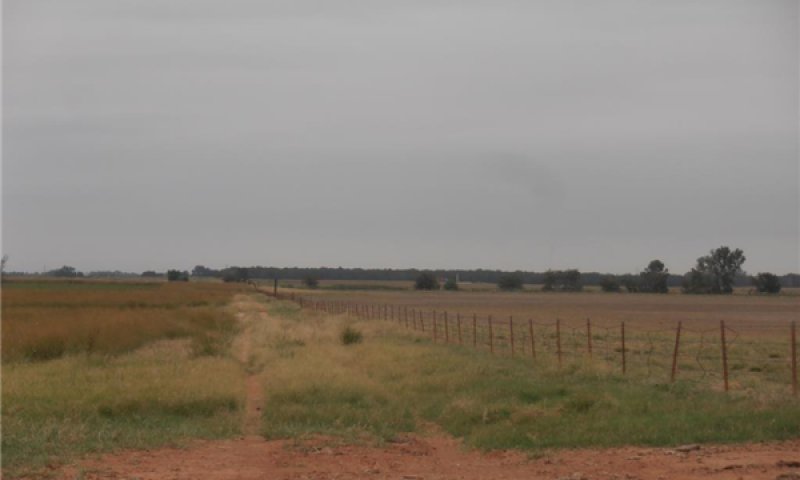
Figure 25. Range Seeding(Left) Cropland(Right). Eda Soils. Major County, OK
This plant community is the result of abandonment or range seeding after cultivation. The pioneer species of a “go back” plant community might include Purpletop (Tridens flavus), Broomsedge Bluestem (Andropogon virginicus), Giant Ragweed (Ambrosia trifida), and often times Johnsongrass (Sorghum halepense). There is often a large amount of variability within both species composition and production within this community. Some sites may be seeded to a diverse mixture of native grasses, forbs, and legumes, while other sites were seeded with very few species or simply abandoned. It is important to remember that without periodic fire or other brush management, the site may be invaded by woody species, regardless of the establishment methods of herbaceous plants.
Community 4.2
Tame Pasture
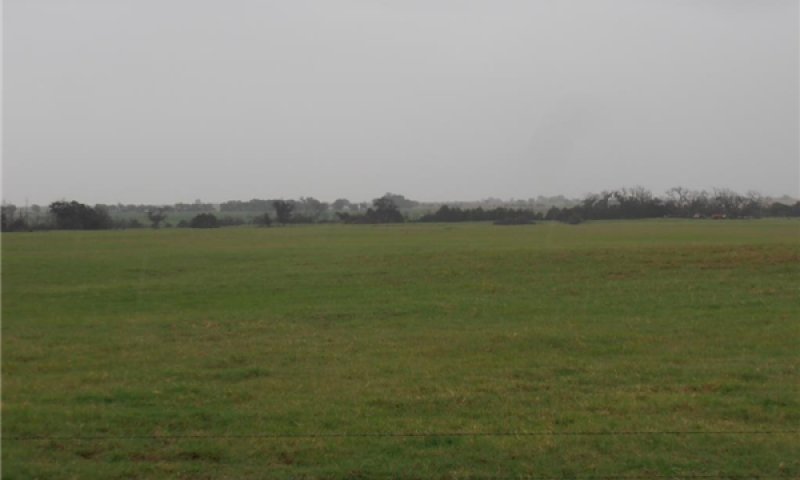
Figure 26. Deep Sand Bermudagrass. Eda Soils. Garfield County, OK
When this site is taken out of crop production, it is often planted to an introduced perennial grass. The most common species are Bermudagrass (Cynodon dactylon) and Weeping Lovegrass (Eragrostis curvula). Many of these sites are used for grazing, cut for hay, or both. The productivity of these perennial grasses is greatly dependent upon nutrient inputs (fertilizer). Nutrient management is key to the establishment and management of these introduced species. Additionally, the addition of nutrients may help to expedite the buildup of soil microorganisms and potentially soil organic matter. For more information about suitable pasture species, planting specifications, and yield data, refer to ag extension publications, web soil survey, and forage suitability group descriptions(if available).
Transition T1B
State 1 to 2
Without fire in the ecosystem, woody species may grow and reproduce unchecked. These species may be endemic (sand plum) or species introduced to the site by animals (eastern redcedar) or plantings (black locust/honey locust). These woody species have the ability to grow deep roots and locate resources within the soil that herbaceous species may not have access to. This gives them a competitive edge for resources and allows them to expand across the landscape. As this woody encroachment occurs, the site may transition to state 2 where the woody species begin to dominate the ecological functions of the plant community.
Transition T1A
State 1 to 3
Some of these sites have been plowed for farming purposes over the last century. Once the site is cultivated, it transitions to an alternative state (3). The soils structure, organic matter, and biota have been altered and will no longer function the same as the soils in the reference state.
Restoration pathway R2A
State 2 to 1
A carefully planned program will restore the Woody state to a close resemblance of the grassland state. Because the 2.2 community will be difficult to prescribed burn (but susceptible to wildfires) some brush management intervention will be needed. Brush management either mechanical, chemical or an integration of both, will allow sunlight energy and soil moisture to be used by tall grasses rather than invasive brush. Constructive grazing management will be required for this plant community to be restored to the grassland state (1). Unless the site has a history of being cropped, there will be sufficient grasses to recover but it may take several years. In some instances, the remaining native perennial seed stock may not be sufficient to repopulate the plant community. A field inventory along with monitoring will be needed to evaluate recovery.
Transition T3A
State 3 to 4
Once cultivation of this site is stopped, the Cultivated State will transition to the Reseeded State.
Additional community tables
Table 9. Community 1.1 plant community composition
| Group | Common name | Symbol | Scientific name | Annual production (lb/acre) | Foliar cover (%) | |
|---|---|---|---|---|---|---|
|
Grass/Grasslike
|
||||||
| 1 | Tallgrasses | 1200–2500 | ||||
| sand bluestem | ANHA | Andropogon hallii | 400–900 | – | ||
| switchgrass | PAVI2 | Panicum virgatum | 120–250 | – | ||
| Indiangrass | SONU2 | Sorghastrum nutans | 50–125 | – | ||
| purpletop tridens | TRFL2 | Tridens flavus | 50–125 | – | ||
| giant sandreed | CAGI3 | Calamovilfa gigantea | 50–125 | – | ||
| Grass, native | 2GN | Grass, native | 0–125 | – | ||
| 2 | Cool Season Grasses and Sedges | 250–525 | ||||
| Heller's rosette grass | DIOL | Dichanthelium oligosanthes | 60–140 | – | ||
| Canada wildrye | ELCA4 | Elymus canadensis | 60–140 | – | ||
| Texas bluegrass | POAR | Poa arachnifera | 50–110 | – | ||
| sedge | CAREX | Carex | 50–110 | – | ||
| Grass, native | 2GN | Grass, native | 0–100 | – | ||
| western wheatgrass | PASM | Pascopyrum smithii | 20–60 | – | ||
| 3 | Midgrass/Shortgrass | 375–750 | ||||
| little bluestem | SCSC | Schizachyrium scoparium | 100–250 | – | ||
| sideoats grama | BOCU | Bouteloua curtipendula | 50–110 | – | ||
| thin paspalum | PASE5 | Paspalum setaceum | 30–80 | – | ||
| sand dropseed | SPCR | Sporobolus cryptandrus | 30–80 | – | ||
| composite dropseed | SPCO16 | Sporobolus compositus | 15–40 | – | ||
| Grass, native | 2GN | Grass, native | 0–40 | – | ||
| fall witchgrass | DICO6 | Digitaria cognata | 10–30 | – | ||
| gummy lovegrass | ERCU | Eragrostis curtipedicellata | 10–30 | – | ||
| red lovegrass | ERSE | Eragrostis secundiflora | 10–30 | – | ||
| purple lovegrass | ERSP | Eragrostis spectabilis | 10–30 | – | ||
| sand lovegrass | ERTR3 | Eragrostis trichodes | 10–30 | – | ||
| witchgrass | PACA6 | Panicum capillare | 10–30 | – | ||
| blue grama | BOGR2 | Bouteloua gracilis | 0–15 | – | ||
| hairy grama | BOHI2 | Bouteloua hirsuta | 0–15 | – | ||
| silver beardgrass | BOLA2 | Bothriochloa laguroides | 0–10 | – | ||
| tumble windmill grass | CHVE2 | Chloris verticillata | 0–10 | – | ||
| purple threeawn | ARPU9 | Aristida purpurea | 0–10 | – | ||
| tumblegrass | SCPA | Schedonnardus paniculatus | 0–10 | – | ||
| 4 | Annual Grasses | 18–40 | ||||
| sandbur | CENCH | Cenchrus | 0–15 | – | ||
| sixweeks fescue | VUOC | Vulpia octoflora | 0–15 | – | ||
| little barley | HOPU | Hordeum pusillum | 0–6 | – | ||
| threeawn | ARIST | Aristida | 0–2 | – | ||
|
Forb
|
||||||
| 5 | Forbs/Legumes | 400–800 | ||||
| queen's-delight | STSY | Stillingia sylvatica | 25–60 | – | ||
| sunflower | HELIA3 | Helianthus | 25–60 | – | ||
| goldenrod | SOLID | Solidago | 5–50 | – | ||
| Virginia tephrosia | TEVI | Tephrosia virginiana | 10–40 | – | ||
| hoary false goldenaster | HECA8 | Heterotheca canescens | 10–30 | – | ||
| hairy false goldenaster | HEVI4 | Heterotheca villosa | 10–30 | – | ||
| bush morning-glory | IPLE | Ipomoea leptophylla | 10–30 | – | ||
| Engelmann's daisy | ENPE4 | Engelmannia peristenia | 10–30 | – | ||
| beeblossom | GAURA | Gaura | 10–30 | – | ||
| azure blue sage | SAAZ | Salvia azurea | 10–30 | – | ||
| Riddell's ragwort | SERI2 | Senecio riddellii | 10–30 | – | ||
| Forb, native | 2FN | Forb, native | 0–30 | – | ||
| dayflower | COMME | Commelina | 10–30 | – | ||
| white sagebrush | ARLU | Artemisia ludoviciana | 5–20 | – | ||
| milkweed | ASCLE | Asclepias | 5–20 | – | ||
| yellow sundrops | CASE12 | Calylophus serrulatus | 5–20 | – | ||
| Cuman ragweed | AMPS | Ambrosia psilostachya | 5–20 | – | ||
| roundhead lespedeza | LECA8 | Lespedeza capitata | 5–20 | – | ||
| aster | SYMPH4 | Symphyotrichum | 5–20 | – | ||
| Indian rushpea | HOGL2 | Hoffmannseggia glauca | 0–15 | – | ||
| coastal indigo | INMI | Indigofera miniata | 5–15 | – | ||
| ticktrefoil | DESMO | Desmodium | 0–15 | – | ||
| palmleaf Indian breadroot | PEDI9 | Pediomelum digitatum | 5–15 | – | ||
| slimflower scurfpea | PSTE5 | Psoralidium tenuiflorum | 5–15 | – | ||
| slender lespedeza | LEVI7 | Lespedeza virginica | 0–15 | – | ||
| Nuttall's sensitive-briar | MINU6 | Mimosa nuttallii | 5–15 | – | ||
| prairie clover | DALEA | Dalea | 5–15 | – | ||
| Illinois bundleflower | DEIL | Desmanthus illinoensis | 5–15 | – | ||
| yellowspine thistle | CIOC2 | Cirsium ochrocentrum | 0–10 | – | ||
| wavyleaf thistle | CIUN | Cirsium undulatum | 0–10 | – | ||
| Texas bullnettle | CNTE | Cnidoscolus texanus | 0–10 | – | ||
| golden tickseed | COTI3 | Coreopsis tinctoria | 0–10 | – | ||
| Hooker's scratchdaisy | CRHO7 | Croptilon hookerianum | 0–10 | – | ||
| croton | CROTO | Croton | 0–10 | – | ||
| partridge pea | CHFA2 | Chamaecrista fasciculata | 0–10 | – | ||
| soft greeneyes | BEPU2 | Berlandiera pumila | 0–10 | – | ||
| purple poppymallow | CAIN2 | Callirhoe involucrata | 0–10 | – | ||
| tarragon | ARDR4 | Artemisia dracunculus | 0–10 | – | ||
| beebalm | MONAR | Monarda | 0–10 | – | ||
| evening primrose | OENOT | Oenothera | 0–10 | – | ||
| dotted blazing star | LIPU | Liatris punctata | 0–10 | – | ||
| rush skeletonplant | LYJU | Lygodesmia juncea | 0–10 | – | ||
| tenpetal blazingstar | MEDE2 | Mentzelia decapetala | 0–10 | – | ||
| narrowleaf four o'clock | MILI3 | Mirabilis linearis | 0–10 | – | ||
| blackeyed Susan | RUHI2 | Rudbeckia hirta | 0–10 | – | ||
| groundcherry | PHYSA | Physalis | 0–10 | – | ||
| nightshade | SOLAN | Solanum | 0–10 | – | ||
| skullcap | SCUTE | Scutellaria | 0–10 | – | ||
| annual buckwheat | ERAN4 | Eriogonum annuum | 0–10 | – | ||
| shaggy dwarf morning-glory | EVNU | Evolvulus nuttallianus | 0–10 | – | ||
| Indian blanket | GAPU | Gaillardia pulchella | 0–10 | – | ||
| camphorweed | HESU3 | Heterotheca subaxillaris | 0–10 | – | ||
| prairie spiderwort | TROC | Tradescantia occidentalis | 0–10 | – | ||
| nettleleaf noseburn | TRUR2 | Tragia urticifolia | 0–10 | – | ||
| silky sophora | SONU | Sophora nuttalliana | 0–10 | – | ||
| scarlet globemallow | SPCO | Sphaeralcea coccinea | 0–10 | – | ||
| sidebeak pencilflower | STBI2 | Stylosanthes biflora | 0–5 | – | ||
| amberique-bean | STHE9 | Strophostyles helvola | 0–5 | – | ||
| smooth jewelflower | STHY | Streptanthus hyacinthoides | 0–5 | – | ||
| Gordon's bladderpod | LEGO | Lesquerella gordonii | 0–5 | – | ||
| plains snakecotton | FRFL | Froelichia floridana | 0–5 | – | ||
| gumweed | GRIND | Grindelia | 0–5 | – | ||
| spurge | EUPHO | Euphorbia | 0–5 | – | ||
| Palmer's spectaclepod | DICA31 | Dimorphocarpa candicans | 0–5 | – | ||
| woolly plantain | PLPA2 | Plantago patagonica | 0–5 | – | ||
| common yellow oxalis | OXST | Oxalis stricta | 0–5 | – | ||
| prairie broomweed | AMDR | Amphiachyris dracunculoides | 0–5 | – | ||
| spotted sandmat | CHMA15 | Chamaesyce maculata | 0–5 | – | ||
| milkvetch | ASTRA | Astragalus | 0–5 | – | ||
| crested pricklypoppy | ARPO2 | Argemone polyanthemos | 0–5 | – | ||
| Missouri gourd | CUFO | Cucurbita foetidissima | 0–5 | – | ||
|
Shrub/Vine
|
||||||
| 6 | Shrub | 200–400 | ||||
| Chickasaw plum | PRAN3 | Prunus angustifolia | 120–240 | – | ||
| fragrant sumac | RHAR4 | Rhus aromatica | 40–80 | – | ||
| sand sagebrush | ARFI2 | Artemisia filifolia | 0–40 | – | ||
| Jersey tea | CEHE | Ceanothus herbaceus | 0–20 | – | ||
| Subshrub, deciduous | 2SSD | Subshrub, deciduous | 0–20 | – | ||
| leadplant | AMCA6 | Amorpha canescens | 0–20 | – | ||
| sumac | RHUS | Rhus | 0–20 | – | ||
| soapweed yucca | YUGL | Yucca glauca | 0–20 | – | ||
| twistspine pricklypear | OPMA2 | Opuntia macrorhiza | 0–5 | – | ||
|
Tree
|
||||||
| 7 | Tree | 25–50 | ||||
| Tree, deciduous | 2TD | Tree, deciduous | 0–50 | – | ||
| sugarberry | CELA | Celtis laevigata | 0–50 | – | ||
Table 10. Community 2.2 plant community composition
| Group | Common name | Symbol | Scientific name | Annual production (lb/acre) | Foliar cover (%) |
|---|
Interpretations
Animal community
This site is suited for the production of domestic livestock and provides habitat for native wildlife and certain species of exotic wildlife. Cow-calf operations are the primary livestock enterprise although stocker cattle are also grazed. Sustainable stocking rates have declined drastically over the past 100 years because of deterioration of the historic plant community. Initial starting stocking rates should be determined with the landowner or decision maker based on the merits of the existing plants for the desired animals.
Many species will utilize the Deep Sand site for at least a portion of their habitat needs but rely on a more extensive landscape to meet all their needs. Some animals may only utilize one plant community of the Deep Sand site to fulfill their habitat needs.
Smaller mammals include many kinds of rodents, jackrabbit, cottontail rabbit, raccoon, skunks, opossum, and armadillo. Mammalian predators include coyote, fox, and bobcat. Many species of snakes and lizards are native to the site.
Many species of birds are found on this site including game birds, songbirds, and birds of prey. Major game birds that are economically important are Rio Grande turkey, bobwhite quail, and mourning dove. Turkey prefers plant communities with substantial amounts of shrubs and trees interspersed with grassland. Quail prefer plant communities with a combination of low shrubs, bunch grass, bare ground, and low successional forbs. The different species of songbirds vary in their habitat preferences. In general, habitat that provides a diversity of grasses, forbs, shrubs, vines and trees, and a complex of grassland, savannah, shrubland, and woodland will support a variety and abundance of songbirds. Birds of prey are important to keep the numbers of rodents, rabbits, and snakes in balance. The different plant communities of the site will sustain different species of raptors.
Hydrological functions
Due to the coarse textured, rapidly permeable soils of this site, changes in hydrologic function are not as abrupt between state changes when compared to other sites. As the site transitions to the Woody state, canopy interception of rainfall by woody species may decrease the amount of water allowed to infiltrate the soil profile and thus decrease available water for other species. Additionally, when this site if cultivated, alteration of the soil structure may have a negative impact on rainfall percolation into the soil profile.
Recreational uses
Recreational Uses: This site is well known for its quail & dove hunting. A multitude of mammals and birds frequent this site, so it is a great area to observe and study Oklahoma animal and plant life. This site is used for many common recreational activities such as hiking, camping, bird watching, hunting and horseback riding.
Wood products
NA
Other products
Many people will harvest Sand plum and Blackberry fruit for use in jams and other goods.
Other information
NA
Supporting information
Inventory data references
Inventory Data References:
Information presented has been derived from NRCS clipping data, research from Oklahoma State University, field observations and measurements by trained range personnel. Most of the clipping data was gathered by a team consisting of a range conservationist and a soil scientist and was site/soil specific. Yields were taken at the end of the growing season and, as near as possible, were obtained from areas that were un-grazed that year. Clipping data repository is in the NRCS State Office in Stillwater, OK.
Data from NRI collections and field sampling was also used in the development of this ESD.
This latest version was part of a progressive update project completed by the Stillwater, OK Soil Survey office in collaboration with staff from Oklahoma NRCS Ecological Sciences section.
References
-
Bestelmeyer, B., J.R. Brown, K.M. Havstad, B. Alexander, G. Chavez, and J.E. Herrick. 2003. Development and Use of State and Transition Models for Rangelands. Jornal of Range Management 56:114–126.
-
Briske, D.D., S.D. Fuhlendorf, and F.E. Smeins. 2003. Vegetation dynamics on rangelands: a critique of the current paradigms. Journal of Applied Ecology 40:601–614.
Other references
Fuhlendorf, S. D., Engle, D. M., Kerby, J. A. Y., & Hamilton, R. (2009). Pyric herbivory: rewilding landscapes through the recoupling of fire and grazing. Conservation Biology, 23(3), 588-598.
Harlan, J. R. (1957). Grasslands of Oklahoma.
National Soil Information System (NASIS). Accessed 2013
Shantz, H. L. (1923). The natural vegetation of the Great Plains region. Annals of the Association of American Geographers, 13(2), 81-107.
Shiflet, T. N. (1994). Rangeland cover types of the United States (Vol. 152). Denver, CO, USA: Society for Range Management.
Soil Survey Staff, Natural Resources Conservation Service, United States Department of Agriculture. Web Soil Survey. Available online at http://websoilsurvey.nrcs.usda.gov/. Accessed [5/5/2014].
USDA NRCS Plants Database. Online.
USDA-SCS Oklahoma Range Site Descriptions(1960s)
USDA-SCS. Soil Survey of Alfalfa County, Oklahoma. 1975
USDA-SCS. Soil Survey of Grant County, Oklahoma. 1985
USDA-SCS. Soil Survey of Major County, Oklahoma. 1968
Contributors/Reviewers:
Brandon Reavis(QC) - Range Management Specialist, OK
Harry Fritzler - Range Management Specialist, OK
Denise Turner - Range Management Specialist, OK
David Kraft - Range Management Specialist, KS
Mark Moseley(QA) - Ecological Site Specialist - Soil Survey Region 9
Contributors
Colin Walden, Range Specialist, Stillwater, OK
Dr. Jack Eckroat, Grazing Lands Specialist, NRCS, Oklahoma
Harland Dietz, Range Conservationist, NRCS, Oklahoma, (Retired)
Approval
Bryan Christensen, 9/19/2023
Acknowledgments
Site Development and Testing Plan:
Future work, as described in a Project Plan, to validate the information in this Provisional Ecological Site Description is needed. This will include field activities to collect low, medium and high intensity sampling, soil correlations, and analysis of that data. Annual field reviews should be done by soil scientists and vegetation specialists. A final field review, peer review, quality control, and quality assurance reviews of the ESD will be needed to produce the final document. Annual reviews of the Project Plan are to be conducted by the Ecological Site Technical Team.
Rangeland health reference sheet
Interpreting Indicators of Rangeland Health is a qualitative assessment protocol used to determine ecosystem condition based on benchmark characteristics described in the Reference Sheet. A suite of 17 (or more) indicators are typically considered in an assessment. The ecological site(s) representative of an assessment location must be known prior to applying the protocol and must be verified based on soils and climate. Current plant community cannot be used to identify the ecological site.
| Author(s)/participant(s) | Mark Moseley, Jack Eckroat, Kay Anderson, Harry Fritzler, Steve Glasgow (edits by C. Walden and Brandon Reavis 2014) |
|---|---|
| Contact for lead author | 100 USDA Suite 206 Stillwater, OK 74074 |
| Date | 04/01/2005 |
| Approved by | Colin Walden |
| Approval date | |
| Composition (Indicators 10 and 12) based on | Annual Production |
Indicators
-
Number and extent of rills:
There are none on this site due to high infiltration rates. -
Presence of water flow patterns:
There are none on this site due to high infiltration rates. -
Number and height of erosional pedestals or terracettes:
There should not be any evidence of erosional pedestals or terracettes on this site. -
Bare ground from Ecological Site Description or other studies (rock, litter, lichen, moss, plant canopy are not bare ground):
There is some variability, but it should average 5-15% bare ground on this site. Bare areas are small and not connected. -
Number of gullies and erosion associated with gullies:
None. -
Extent of wind scoured, blowouts and/or depositional areas:
None. -
Amount of litter movement (describe size and distance expected to travel):
Very little movement due to water because of high infiltration. Twelve inches maximum, and following heavy rains on steeper slopes. -
Soil surface (top few mm) resistance to erosion (stability values are averages - most sites will show a range of values):
Surface soil is stabilized (Stability Score 5 – 6). Stability scores based on a minimum of 6 samples tested. -
Soil surface structure and SOM content (include type of structure and A-horizon color and thickness):
A horizon: 0 to 16 inches; brown loamy fine sand, weak medium sub angular blocky structure. E/Bt horizon: 16 to 29 inches, reddish yellow sand, prismatic structure.
Refer to specific description for component sampled. -
Effect of community phase composition (relative proportion of different functional groups) and spatial distribution on infiltration and runoff:
Permeability is rapid and uniform. Runoff is very low. Reference plant community composition and distribution is intact. (Tallgrass/Midgrass dominated) -
Presence and thickness of compaction layer (usually none; describe soil profile features which may be mistaken for compaction on this site):
There is no compaction layer due to sandy soils. -
Functional/Structural Groups (list in order of descending dominance by above-ground annual-production or live foliar cover using symbols: >>, >, = to indicate much greater than, greater than, and equal to):
Dominant:
Tallgrasses = MidgrassesSub-dominant:
Cool Season grasses,ForbsOther:
Shortgrasses, Shrubs, Annual grassesAdditional:
-
Amount of plant mortality and decadence (include which functional groups are expected to show mortality or decadence):
There is some plant mortality and decadence on the perennial grasses, especially in the absence of fire and herbivory, or extended drought. Less than 10%. -
Average percent litter cover (%) and depth ( in):
Litter should cover at least 25-75% of the area between plants with accumulations of .25 - .5 inch deep. -
Expected annual annual-production (this is TOTAL above-ground annual-production, not just forage annual-production):
Normal production is 2500-5000 pounds per year. -
Potential invasive (including noxious) species (native and non-native). List species which BOTH characterize degraded states and have the potential to become a dominant or co-dominant species on the ecological site if their future establishment and growth is not actively controlled by management interventions. Species that become dominant for only one to several years (e.g., short-term response to drought or wildfire) are not invasive plants. Note that unlike other indicators, we are describing what is NOT expected in the reference state for the ecological site:
Invasives might include: Eastern edcedar, Black Locust, Honey Locust,and non-natives. -
Perennial plant reproductive capability:
All plants capable of reproducing at least every 3 years. Both seedheads and vegetative rhizomes/tillers should be evaluated.
Print Options
Sections
Font
Other
The Ecosystem Dynamics Interpretive Tool is an information system framework developed by the USDA-ARS Jornada Experimental Range, USDA Natural Resources Conservation Service, and New Mexico State University.
Click on box and path labels to scroll to the respective text.
